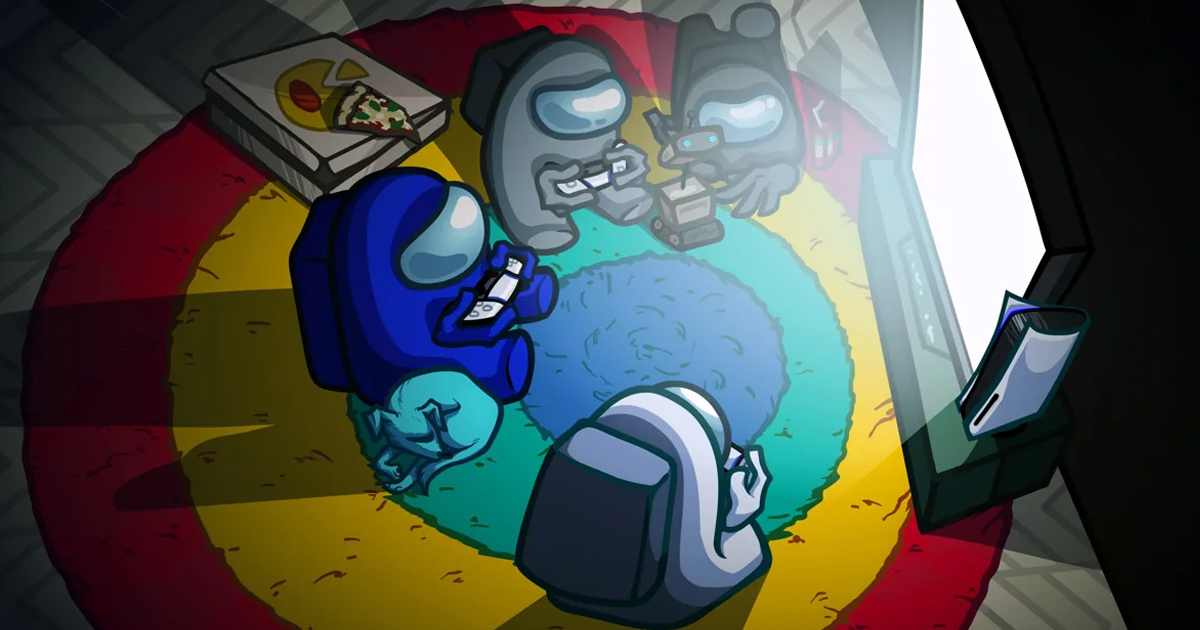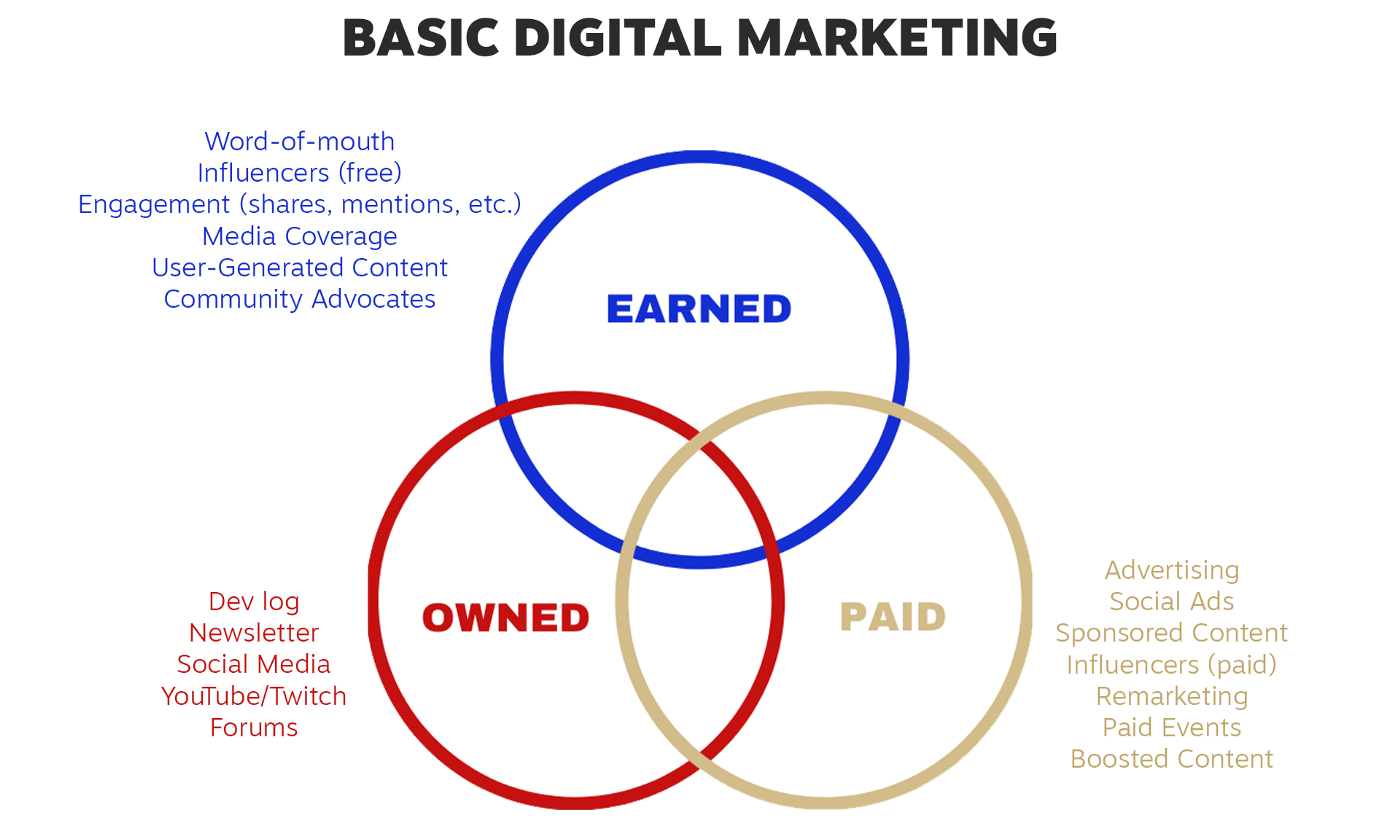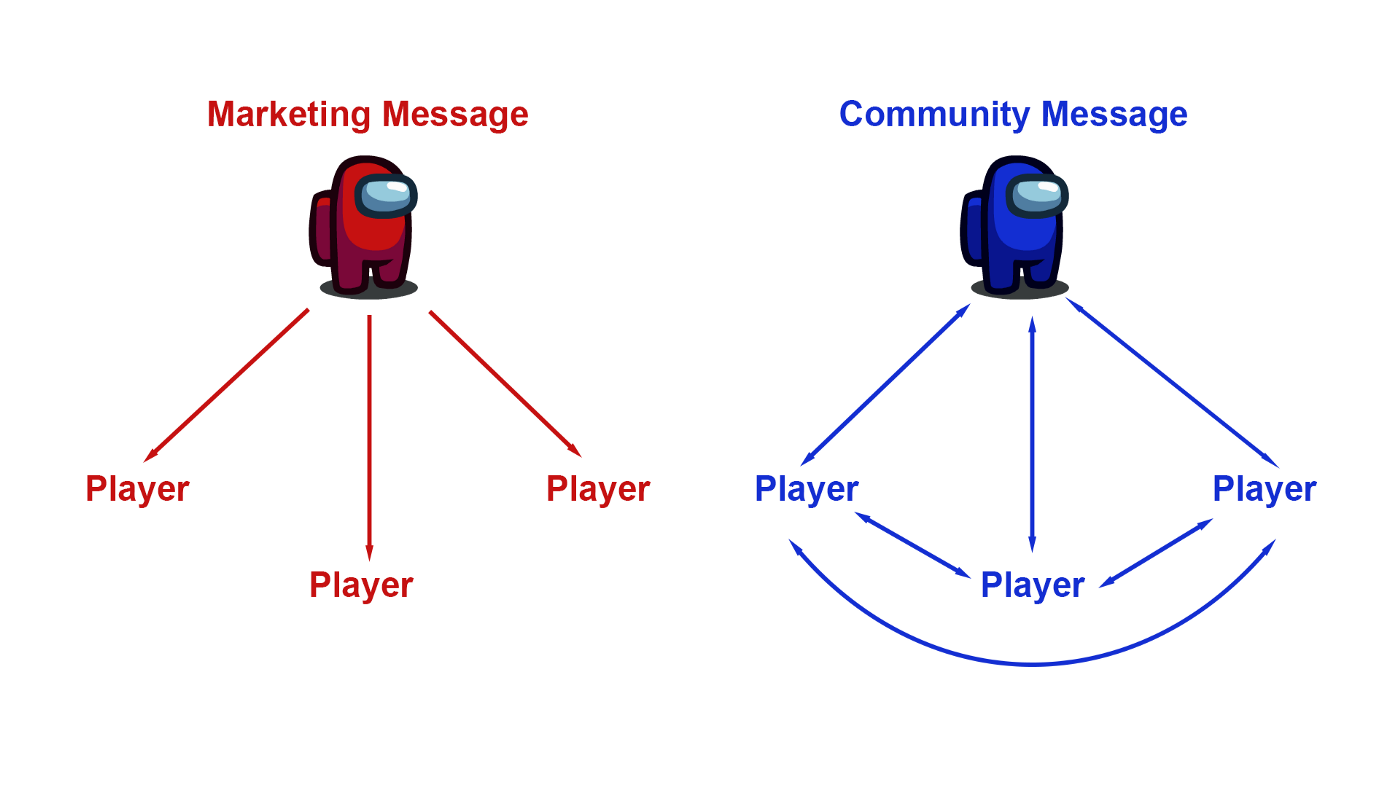How to calculate the budget for working with the community — tips of a community manager Among Us
Victoria Tran, community director Among Us, gave some tips to indie developers on working with the community. She spoke about budget planning, the difference between community management and marketing, and the range of main tasks in this area.
Note: Tran notes that it is impossible to create a universal instruction suitable for everyone. Details may vary depending on the type of game (single, multiplayer, mobile, premium, etc.) and the size of the studio (indie, AAA).
Briefly about the numbers
Tran herself believes that marketing should account for 25% to 50% of the production budget. In this case, 25% is the minimum threshold, and the final amount depends on the specific game and its development schedule.
It is difficult to say how much of the marketing budget will go directly to community management. However, Tran cites several common items of expenses that may arise when working with the community (prices are relevant for the USA):
- hiring a community manager in the state (annual salary — $ 60-90 thousand): the cost depends on the experience and place of residence. According to Tran, such specialists are often underpaid, given the volume of tasks performed: “The salary in indie can be quite low, but the salary of more experienced specialists in large companies can correspond to programmers and be calculated in six-figure amounts”;
- creating trailers (budget — from $ 1000 to $20 thousand): it all depends on the experience of the team and the amount of work. Tran recommends paying attention to the website of Derek Lieu with tips on the production of trailers and a description of specific cases;
- writing press releases (budget — $1000-3000): the cost depends on the type of press release, as well as on the pricing policy of a particular agency (some may give discounts to indie developers);
- participation in conferences (budget — $3000 to create a stand on the site + costs for flights / hotels/ meals + development of a demo version): the cost depends on the conference, the size of the venue and the need to rent additional equipment.
Tran notes that there are many hidden costs, including localization, website creation, working with influencers and paying for subscriptions to working tools. In addition, promotional materials often require unique art, the creation of which involves paying for the work of artists. All these variables should also be taken into account when planning a budget.
What is the essence of community management?
Often companies mistakenly try to combine marketing, customer support, community work, SMM and PR. According to Tran, it’s like forcing one artist to do animation, draw concepts, do graphic design and create interfaces.
To better understand the specifics of this area, you can look at the three components of digital marketing. It is usually divided into the following media channels: paid (advertising, sponsored content, influencers), purchased (word of mouth, engagement, press coverage, UGC) and own (social networks, mailing lists, YouTube, forums).
The area of competence of a community manager is usually located at the intersection of acquired and own channels.
At the same time, small indie studios usually do not have a clear range of tasks for a community specialist – each team can define them in its own way. “But it is important to remember that the more tasks assigned to one person, the more likely it is that the whole work (or part of it) will suffer,” Tran emphasizes.
What do purchased, paid and own media channels include?
In a broad sense, the difference between marketing and working with the community can be defined as follows:
- marketing is focused on external tasks and answers the following questions: how to attract as many users as possible? how to interest them? what will attract their attention?;
- community management is focused on internal tasks and answers the following questions: how to improve the space around our game? how to unite community members? how to constantly involve participants and make them loyal supporters?
Marketing is usually directed in one direction, and working with the community implies feedback and more direct contact
These tasks should be separated and taken into account when planning a budget for community management and finding the appropriate specialist.
How to work with the community correctly?
Tran decided to focus only on specific types of studios with the following common features:
- a small indie team that needs a community manager to perform related duties like marketing, SMM and PR;
- the game is released only on PC;
- the studio does not have a publisher who could help with promotion and PR.
Option 1. A lone developer without a separate community manager
According to Tran, novice indie developers often turn to her for advice. Usually they don’t have the expertise and funds to work with the community, but at the same time they ask — how to build a community around their game?
The short answer is no, because communities don’t magically form around games.
However, even in this case, you can find a way out of the situation and try to create content on your own, find an audience and ways to engage it, as well as lead forums and respond to user messages.
“Remember what I said about spending 25-50% of the production budget on marketing? The same principle can be applied to your time. For every hour spent on game development, you can allocate an additional 15-30 minutes for marketing,” Tran notes.
In this case, she advises focusing on several channels for working with the audience: social networks, digital events (including joint activities with other indie developers) and communication with the press.
Option 2. Hiring a separate community manager
Tran advises hiring such a specialist as early as possible — at least six months before the planned release.
The best option is to attract a person from the field of marketing or community management at the stage of creating a prototype. In this case, the specialist will be able to offer ideas during the entire development process and gradually build relationships with the audience.
Speaking about the distribution of responsibilities and time, Tran cited as an example her experience working at Innersloth as a community director (the classic 40-hour working week was taken as a basis):
- development of a marketing strategy (25% of the time) — monitoring of marketing activities, creating campaigns to increase brand awareness, copywriting, monitoring competitors’ activities, working with external partners;
- SMM (20% of the time) — content creation, idea generation, schedule planning, working with artists, social media campaigns;
- working with the community (30% of the time) — interacting with players and influencers, tracking game discussions in various channels and participating in a dialogue, encouraging individual community members, monitoring and working with user reviews, posting relevant information and news about the game;
- reports and analytics (15% of the time) — tracking traffic and interactions (likes, comments, shares), collecting key information from social networks and providing feedback to developers, collecting useful information from the community at the request of the development team;
- PR and work with influencers (5% of the time) — answering questions and transmitting them to specific team members, participating in streams and events, informing the press about game innovations, selecting influencers for promotion;
- the rest (5% of the time) is solving crisis issues, working with support and bans, performing random business requests, filtering out bots in Discord, presenting the game at major events.
Tran once again stressed that this list of tasks ideally should not be performed by one person. However, in some cases (for example, with a small budget) there may be exceptions.
Another option may be to hire a part-time community manager. However, this is very likely not to end well, given the amount of work and its specifics. In addition, people with experience are usually looking for such positions, and they are usually only interested in working full-time.
Conclusions
According to Tran, the chances that the game will become a hit without investing in marketing and working with the community are almost zero. Such situations happen from time to time, but betting on them is like trying to win the lottery.
“Even with the explosive popularity of Among Us, the hard work of the three original Innersloth employees, who did everything possible to increase the visibility of the game and introduce it to as many players as possible, played a key role,” explains Tran.
At the same time, it is important to remember that the presence of a community manager or a marketer in itself does not guarantee success. They can help with promotion and attract an audience to the project, but they will not be able to miraculously turn any game into a hit.


